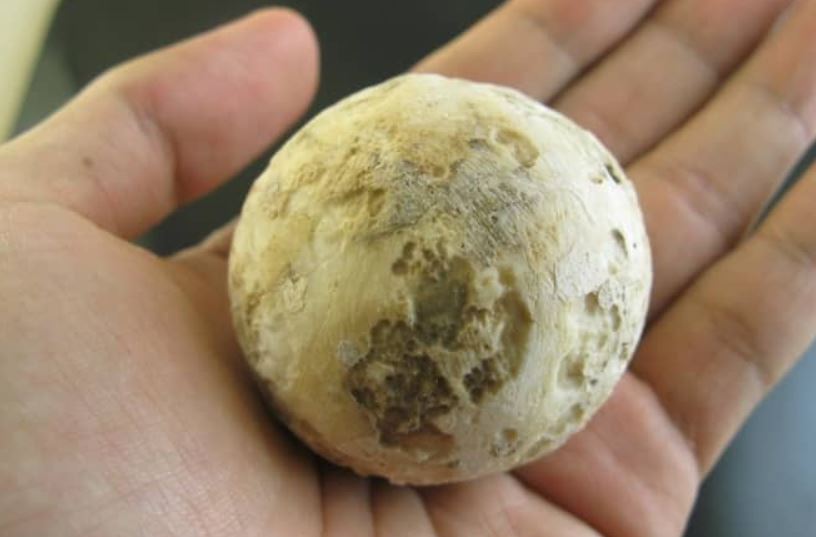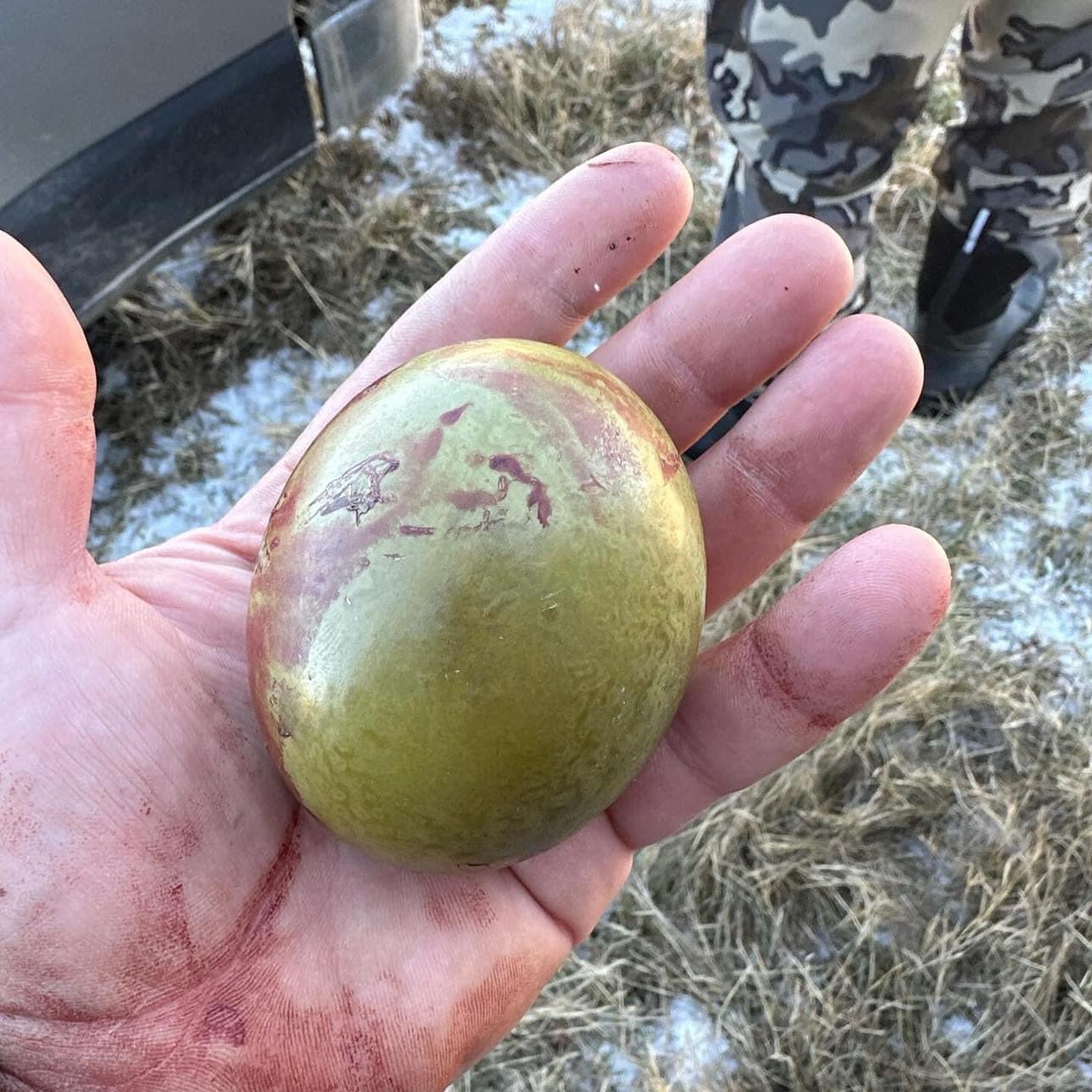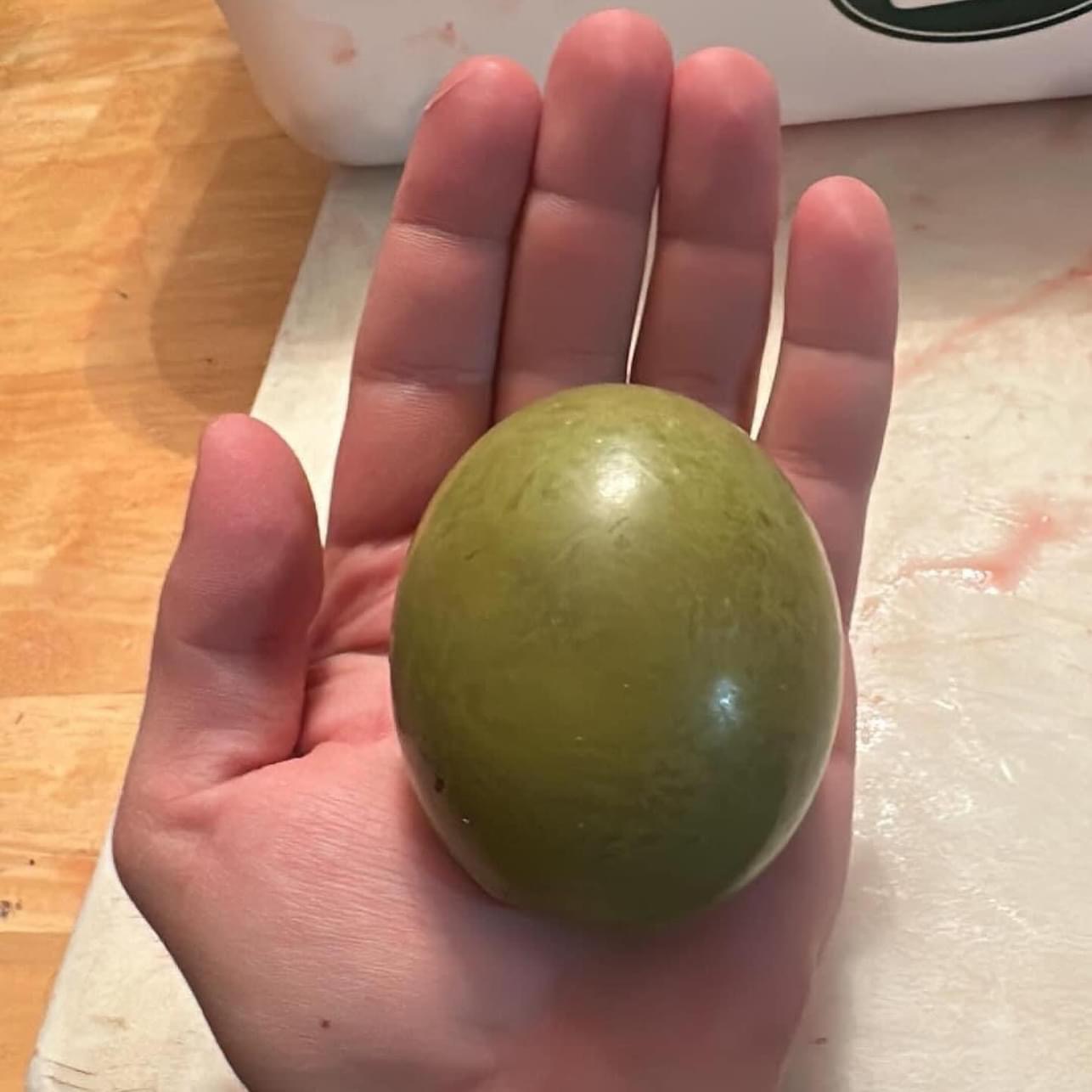What are Deer Mad Stones?
A mad stone, also known as s bezoar stone, are naturally occurring masses that form in the stomachs of certain animals, particularly ruminants, such as white-tailed deer and goats. The are often called a deer pearl when found in deer. Referred to as deer mad stones, these “gems” are formed from the accumulation of indigestible materials, such as hair, fibers, and plant matter, which gather and compact over time in the stomach.
In white-tailed deer and other deer species, these mad stones are referred to as deer pearls since they are formed similarly to oyster-formed pearls. However, the presence of these stones is not universal among all members of a particular species. It’s not accurate to say that every whitetail has deer pearls or deer mad stones. The formation of these stones is influenced by various factors, including the deer’s diet, health, and other physiological factors.

Hunter Finds Deer Pearl in Buck
“This is what biologists refer to as a mad stone or deer pearl. They grow to baseball-sized proportions and are formed when calcium clings to a foreign object (like hair) in the deer’s stomach. The process is similar to how an oyster creates a pearl. And if you cut one open, you’ll find growth rings like that of a tree.

It was once believed that mad stones had healing properties, and that those from albino deer were extra powerful. Some textbooks from the 1800s say these formations could cure rabies, snakebites, and more.

A common treatment was to soak the stone in milk and apply it directly to the wound. When it was done absorbing the poison from your body, it was placed back into the milk to recharge.

Mad stones are rare, but it’s said they’re more common in the East where soil is calcium-rich. So next time you kill a hoofed animal, do some rockhounding by exploring its stomach. You might just find a pearl.”
Deer Pearls are a Rare Find
The Power of Deer Mad Stones
A mad stone or bezoar stone is a substance that was traditionally believed to have medicinal properties, particularly in folk medicine. It was thought to have the ability to neutralize or absorb poisons. The name “mad stone” comes from its historical use as a supposed remedy for rabies or “mad dog” bites.
The mad stone is typically derived from the stomach of a ruminant, such as a goat, whitetail, or other deer species. The belief was that these stones could absorb toxins and poisons when applied to a wound. In the case of rabies, it was thought that using a mad stone on the bite wound could prevent the onset of symptoms.
It’s important to note that the efficacy of mad stones in treating rabies or other poisonings has never been scientifically proven. With the advancement of modern medicine and the development of vaccines, the use of mad stones has largely fallen out of favor, and medical professionals strongly recommend seeking conventional medical treatment, such as rabies vaccination, in the case of potential exposure to rabies.
I could give you more details about how I found it as well. You can reach me at 602-717-8283
Dalton, thanks for jumping in. I am curious, how exactly did you find this mad stone?
Do you think Deer from certain areas are more prone to have the stones in them or is it just hit or miss no matter whst part of the Country you live in